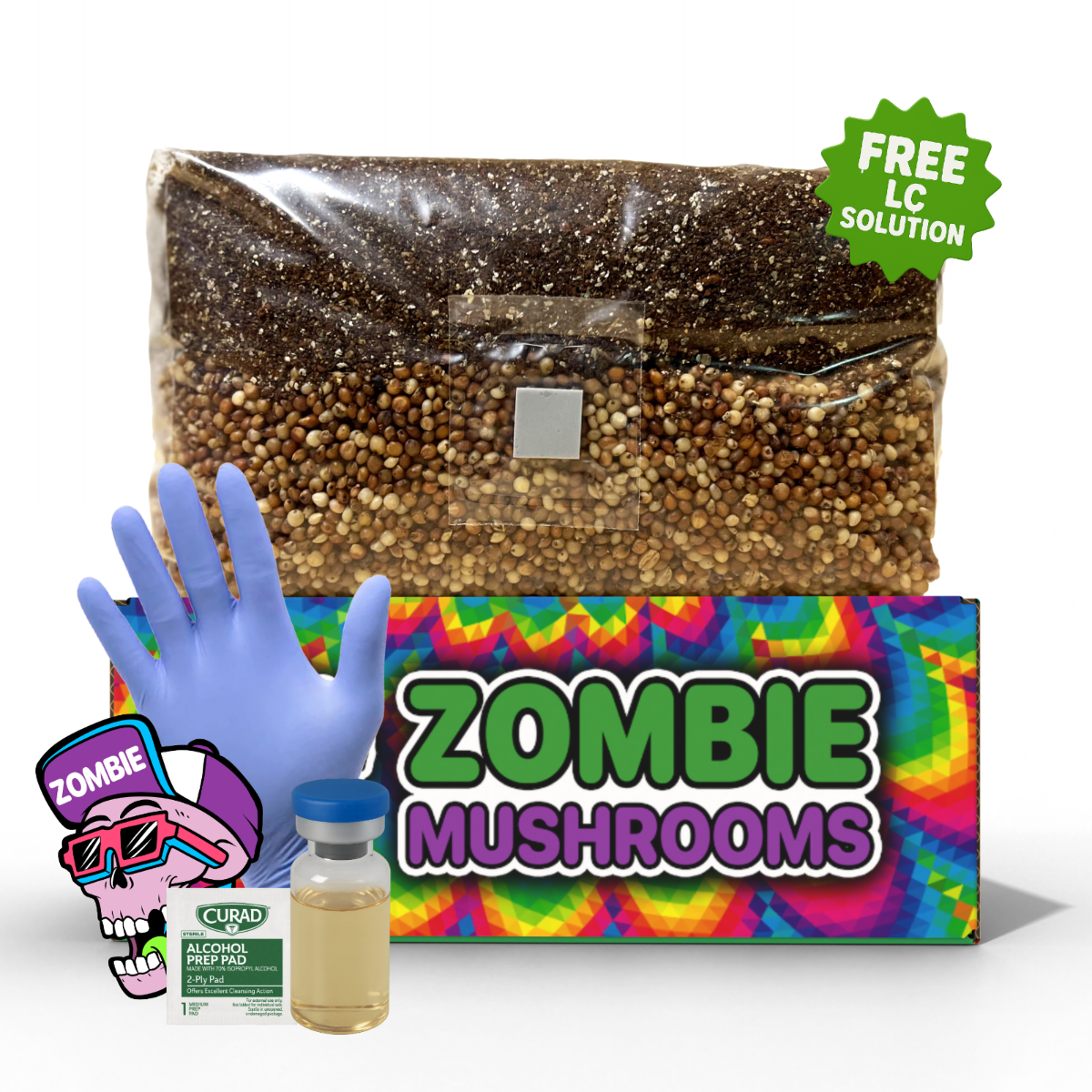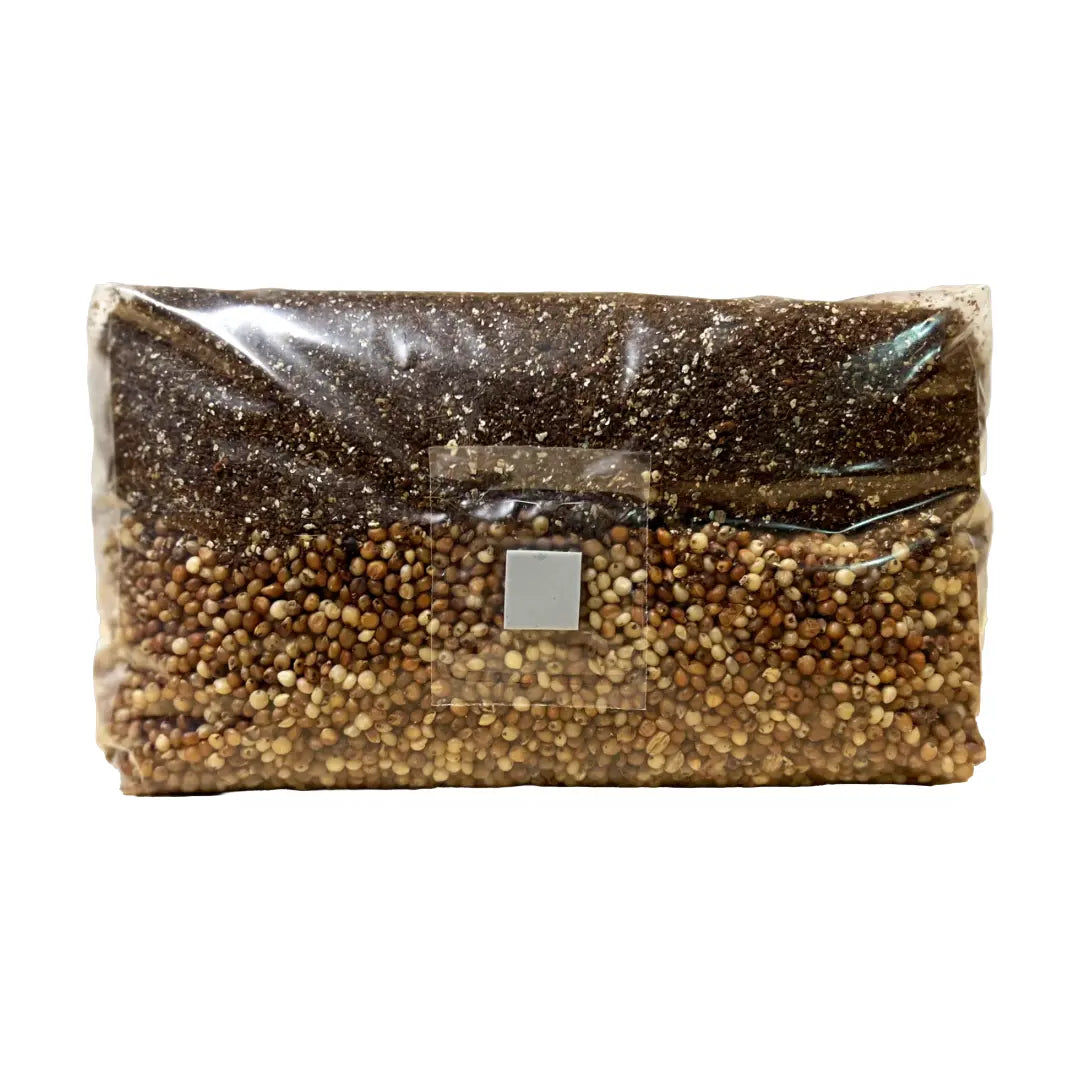- Master’s Mix substrate provides up to 2-3 times higher yields when compared to sawdust-based substrates.
- Sterilization at 15 PSI for 2.5 hours is essential for preventing contamination and ensure mycelium colonization.
- Maintaining 60-65% moisture content within the substrate is critical for proper mycelial growth and fruiting.
- Mycelium colonizes fastest at 70-75°F (21-24°C) and requires high humidity (85%+) for optimal mushroom production.
- Despite its higher cost, Master’s Mix is favored by commercial growers due to consistent high-quality results and scalability.
Master’s Mix Substrate for Mushrooms: A Complete Guide
Mushroom cultivation is greatly dependent on the substrtae utilized, as it functions as the main nutrient source for mycelium. Among different choices, Master’s Mix substrtae is recognized as a very effective option for cultivating gourmet mushrooms. This substrtae, a combination of hardwood and soybean hulls, is created to maximize yield, speed up colonization, and make an ideal setting for mushroom growing. In this guide, we’ll go over everything about Master’s Mix substrtae—from its composition and preparation to common challenges and cultivation tips. Our ready-to-use Masters Mix bags make it simple for beginners to get great results without the hassle of mixing on their own.

What is Master’s Mix?
Master’s Mix is a specially made mushroom substrtae created from two main ingredients
- 50% hardwood fuel pellets or sawdust
- 50% soybean hulls
- Water (adjusted to 60-65% moisture)
This combination provides a prime setting for mycelium growth because of its high nutritional value and great moisture retention. The hardwood serves as a fibrous, carbon-rich base, and soybean hulls add a nitrogen boost, encouraging faster colonization and increased mushroom yields.

Who Invented the Master’s Mix?
The Master’s Mix substrtae was developed by T.R. Davis, a mushroom cultivation expert and founder of Mushroom Mountain. Recognizing the limitations of standard hardwood-based substrates, Davis aimed to create a cost-effective, high-performance option that would give cultivators a higher biological efficiency (BE) while remaining simple to prepare. Since its introduction, this substrtae has been widely taken up by both amateur growers and large-scale commercial operations.

Which Mushrooms Thrive on Master’s Mix?
Master’s Mix is widely considered one of the most versatile substrates, supporting a range of gourmet mushroom species, including
Best Mushroom Varieties for Master’s Mix
- Oyster Mushrooms (Pleurotus spp.) – Grow exceptionally fast, with high yields.
- Lion’s Mane (Hericium erinaceus) – Benefits from the rich nutrition, producing large, meaty fruiting bodies.
- Shiitake (Lentinula edodes) – Colonization is faster when compared to hardwood sawdust alone.
- Pioppino (Agrocybe aegerita) – Grows well however requires proper moisture levels.
- Chestnut Mushrooms (Pholiota adiposa) – Thrives in the nutrient-rich setting of Master’s Mix.
- Enoki (Flammulina velutipes) – Colonization speed is significantly higher.
- King Oyster Mushrooms (Pleurotus eryngii) – Requires proper humidity for full-sized caps.
- Maitake (Grifola frondosa) – Performs well with long incubation times.
This substrtae is not suitable for Button or Portobello mushrooms, as these species prefer composted manure-based substrates.

Pros and Cons of Using Master’s Mix
Advantages
- Higher mushroom yields – Produces up to 2-3 times more mushrooms than sawdust-based substrates.
- Faster mycelium colonization – Growth rates increase by 40% on enriched substrates.
- Wide species compatibility – Supports many gourmet species.
- Excellent water retention – Holding 60-65% moisture ensures steady fruiting.
- Scalable & cost-effective – Best for commercial growers who source bulk materials.
Disadvantages
- Requires sterilization – Due to high nutrient content, proper sterilization at 15 PSI for 2.5 hours is neccessary.
- Not ideal for small-scale growers – Soybean hulls may be difficult to source in small quantities.
- Potential contamination risks – Requires careful moisture balance to prevent mold and bacteria.
- More preparation time needed – When compared to straw-based substrates.

How to Make Master’s Mix Substrate: A Step-by-Step Guide
Ingredients & Equipment
Ingredients (for 5 lbs of dry substrate)
- 2.5 lbs hardwood fuel pellets or sawdust
- 2.5 lbs soybean hulls
- 5-6 quarts of water (to achieve 60-65% moisture)
Essential Equipment
- Large mixing container
- Weighing scale
- Grow bags with filter patches
- Pressure cooker/autoclave (for sterilization)
- Sealer (optional but recommended)
Step 1: Mixing the Ingredients
- Weigh out 50% hardwood and 50% soybean hulls.
- Gradually add water, mixing continuously until moisture reaches 60-65%.
- Perform a squeeze test – the substrtae should be damp but not dripping excessively.
Step 2: Loading the Growing Bags
- Fill sterilization-ready grow bags no more than two-thirds full.
- Compress lightly to remove extra air, then seal the bag.
Step 3: Sterilization Process
Master’s Mix is nutrient-rich, making proper sterilization crucial.
- Load bags into an autoclave or pressure cooker.
- Fill with water to the recommended level.
- Set to 15 PSI and maintain for 2.5 hours.
- Allow to cool completely before inoculation with mushroom spawn.

Common Problems and How to Fix Them
Problem #1: Contamination
Cause: Insufficient sterilization or improper inoculation.
Solution: Sterilize at 15 PSI for 2.5 hours, use clean tools, and work in a sterile environment.
Problem #2: Slow Colonization
Cause: Incorrect temperature, moisture imbalance, or low spawn ratio.
Solution: Keep at 70-75°F (21-24°C), ensure moisture content is correct, and use a 1:5 spawn-to-substrtae ratio.
Problem #3: Poor Fruiting
Cause: Low humidity or improper CO2 levels.
Solution: Maintain humidity above 85% and ensure proper air exchange.

How Master’s Mix Compares to Other Substrates
| Substrate Type | Yield Potential | Ease of Use | Sterilization Needed? | Best for These Mushrooms |
|---|---|---|---|---|
| Master’s Mix | High (2-3x sawdust yield) | Moderate | Yes (15 PSI, 2.5hrs) | Oyster, Lion’s Mane, Shiitake, Maitake |
| Sawdust | Moderate | Easy | Sometimes | Shiitake, Reishi |
| Straw | Low-Medium | Very Easy | No | Oyster, Enoki |
| Coco Coir/Manure | Medium | Moderate | No | Button, Portobello |
Master’s Mix delivers superior yields however requires sterilization and precise moisture control.
Final Thoughts
For those serious about mushroom growing, Master’s Mix substrtae provides unmatched yields and colonization speed. While it requires sterilization and careful preparation, its nutritional profile supports vigorous mycelium growth and gourmet mushroom production. Beginners should start small to perfect the process before scaling up for commercial growth. Those who refine their technique with Master’s Mix can expect larger harvests, healthier mushrooms, and higher profitability.
References
- Royse, D. J., Baars, J., & Tan, Q. (2017). Current advances in mushroom biotechnology. In Z. E. Grumezescu & A. M. Holban (Eds.), Biotechnology of Fungal Metabolites (pp. 1-32). Academic Press.
- Stamets, P. (2000). Growing gourmet and medicinal mushrooms. Ten Speed Press.
- Wuest, P.J., & Royse, D.J. (2007). Mushroom Science and Technology. Pennsylvania State University Press.



